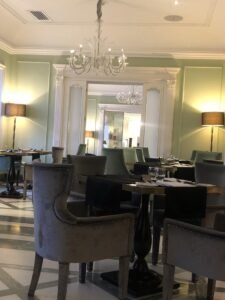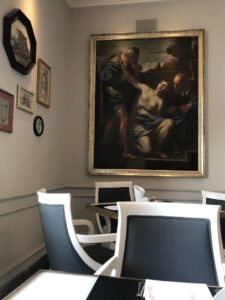Why discover more about Southern Italy?
While developing Ethica Heritage and its mission, Heidi James-Fisher and I, Vincenzo Pascale, agreed on unconditionality, the centrality of Ethica Heritage’s Mission to include Southern Italy. Because of its history and bimillennial cultural heritage, it is central to the history and culture of the Mediterranean. The Mediterranean and Southern Italy are one solid culture and heritage. A geographical space and a cradle of great civilizations. The global Mediterranean was thought and studied by great scholars such as Fernand Braudel, George Duby, David Abulafia, and many more.
From Sicily with its stratification of cultures, food, architecture, and art styles from Greeks to Phoenicians to Arabs to Normans. An island crucial to link East to West North to Southern Europe. Sicily is an island of grand literary narratives and artists which contributed to the luster of Sicilian and Italiana literary tradition. On to Calabria, the first area hosted settlements from the Greek’s exodus. Sibari and all the Ionian Coast hosted settlers from Greece and developed their own culture, philosophy, and civilization.
Puglia is a region that has served for two thousand years as a bridge from Western Europe, the Middle East, and the far East. An area with many archeological sites to be explored and excavated and brought to scholarly and public attention. The unique cone-shaped houses of Alberobello and beautiful baroque-style architecture in Lecce. The tip of the region and the City of Otranto has a large and spectacular seaside. The area has enchanting olive trees fields -some over a thousand years old – creating a unique and uncontaminated landscape admired by artists and naturalists.
Naples – Restaurant with a view
Campania, with its archeological treasures of Paestum, Velia, and the Bay of Naples, is treasured by locals and scholars alike. For centuries, a region with a city, Naples was one of the most important cities of Europe, where sophistication mixed with popular cultures. Naples is renowned for its historical theatre and royal palaces. The San Carlo Theatre is the eldest opera house in Europe. It started to offer musical performances in 1737. Capodimonte’ Museo hosts one of the most prestigious modern art collections and MANN -National Museum of Archeaology is a gem for archeologists and historians. Naples is a living open museum built over two thousand years of history and cultural heritage.
The inland of Campania. Irpinia is the green area of Campania. An ancient territory inhabited by Hirpini, a Samnites population, fiercely opposed the Romans. Irpinia has many archeological sites related to the Roman conquest. The Appian Road crosses Irpinia on the way to Brindisi. The territory is mainly unknown to mass tourism and offers excellent and genuine food and among the best and eldest wines of Italy: like Taurasi and Fiano.
Samnium is a vast area north of Naples, inhabited during ancient times by Samnites. A fiery population that strenuously opposed the Roman conquest. The area is rich in archeological sites from Samnites, Roman, and the Langobards. The Langobard population occupied the area for several centuries. They created their architectural styles and monuments, such as the church of Santa Sofia, a UNESCO world heritage site.




